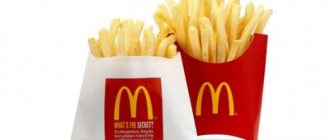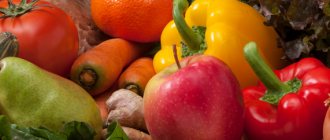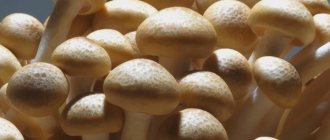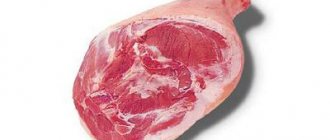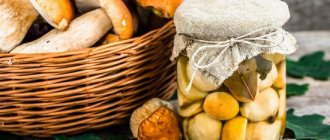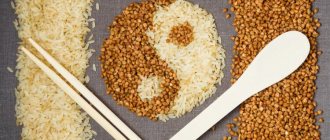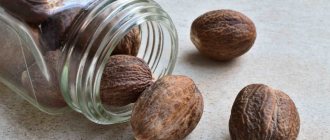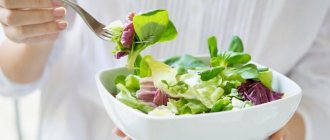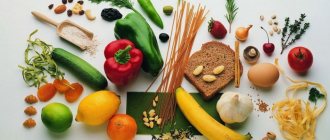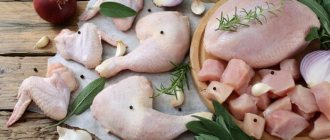Studying labels
It is almost impossible to remember the entire calorie table. Carrying it with you in printed form all the time is impractical. Therefore, the best advice would be to study the labels
If it is critical for you to know how many calories you consume, then carefully study the labels on alcoholic beverages. Those who have already begun to lean towards switching to non-alcoholic analogues of their favorite drinks should definitely keep in mind that many of these options may turn out to be even higher in calories
For example, non-alcoholic beer has only 10 kcal less than classic beer. Therefore, there is no point in denying yourself pleasure for the sake of a few kilocalories. It is much wiser to comply with the norm, not exceed it and prefer light snacks.
The value of alcohol
The calorie content of alcohol depends on many factors. It is worth considering that the higher the degree of the drink, the greater its calorie content. In addition, the final figure is affected by the content of yeast, fructose, and sugar.
1 g of alcohol contains 7 empty kilocalories. This is more than 1 g of carbohydrate or protein (4 kcal), but less than the same amount of fat (9 kcal). But fats, proteins and carbohydrates provide nutritional value to the body, keeping it full for a long time, while alcohol consists almost entirely of empty calories.
When alcohol enters the body, enzymes quickly break it down to neutralize the harmful effects. Alcohol almost immediately enters the bloodstream, from where it spreads throughout the body.
Important! The presence of food in the stomach slows down the immediate absorption of alcohol
Under the influence of alcoholic drinks, the level of glucose in the blood decreases, which leads to a feeling of hunger.
A person begins to eat food, but the body first needs to break down empty alcohol calories. And all substances (proteins, fats, carbohydrates) obtained from food are “in reserve”, since their breakdown begins only after empty calories.
Under the influence of alcoholic drinks, the level of glucose in the blood decreases, which leads to a feeling of hunger. A person begins to eat food, but the body first needs to break down empty alcohol calories. And all substances (proteins, fats, carbohydrates) obtained from food are “in reserve”, since their breakdown begins only after empty calories.
Weak
Low-alcohol drinks have the lowest calorie content. Just keep in mind that they are usually drunk in large quantities. The calorie content of the most popular low-alcohol drinks is shown in the table per 100 grams:
| Drink name | kcal/100 ml |
| Light beer | 43 |
| Dark beer | 36 |
| Apple cider | 53 |
| Pear cider | 62 |
| Cocktail in a can | 50 |
Average
In medium-strength drinks, the calorie content mostly depends on the amount of sugar, since it is in this category that the most “sweet” representatives are found. Calorie content of the most popular medium-alcohol drinks:
| Name | kcal/100 ml |
| Dry red wine | 70 |
| Red semi-sweet wine | 100 |
| Red semi-dry wine | 80 |
| Dry white wine | 64 |
| White semi-sweet wine | 90 |
| White dessert wine | 150 |
| Dry rose wine | 74 |
| Rose semi-sweet wine | 90 |
| Semi-dry champagne | 70 |
| Champagne semi-sweet | 100 |
| Brut | 55 |
| Dry champagne | 50 |
| Mead | 60 |
| Punch | 50 |
| sake | 130 |
| Mulled wine | 100 |
| Cream liqueur | 327 |
| Coffee liqueur | 250 |
| Amaretto liqueur | 280 |
| Egg liqueur | 270 |
Strong
Strong alcohol contains the most calories due to its high ethanol content. But such drinks are usually drunk little by little, so in the end the harm to the figure may be less than in the case of the “weak” representatives of the alcoholic fraternity. Calorie content of the most popular strong alcoholic drinks:
| Name | kcal/100 ml |
| Vodka | 230 |
| Anisette vodka | 290 |
| Cognac | 230 |
| Rum | 220 |
| Tequila | 200 |
| Brandy | 230 |
| Gin | 260 |
| Absinthe | 230 |
| Sambuca | 250 |
| Tincture (cranberry/lingonberry) | 240 |
| Tincture (cherry) | 300 |
What is beneficial and harmful in wine?
The beneficial substances in wine include so-called polyphenols, i.e. antioxidants. They are able to have a positive effect on the condition of blood vessels and intestinal microbiota. But at the same time, experts note that polyphenols are most useful for animals, not for people.
B vitamins and some minerals can be found in wine in small quantities. These are potassium, calcium, magnesium and phosphorus. But it is worth considering that you can also get these substances from other foods.
The most harmful component of wine is ethanol. It is toxic and can cause serious harm to the entire human body. To break it down, the enzyme alcohol dehydrogenase produced in the body is required, but with age, ethanol breaks down less and less well.
It is also worth remembering that due to the characteristics of metabolism, women tolerate alcohol worse than men.
Calorie table for compotes and fruit drinks
Compote is a drink made from boiled berries or fruits, followed by sterilization and preservation. This is the most popular type of preparation for the winter. In addition to compote, there is also the so-called “uzvar” - it differs in the method of preparation and is made from dried fruits. Unlike traditional cooking, uzvar is only brought to a boil, which allows you to preserve all the beneficial properties and vitamins of dried fruits.
Calorie content of compote
Compote calorie table
| Drink name | Beckley | Fats | Carbohydrates | Calorie content |
| Plum compote | 0,5 | 0,0 | 23,9 | 96,0 |
| Cherry compote | 0,6 | 0,0 | 24,5 | 99,0 |
| Pear compote | 0,2 | 0,0 | 18,2 | 70,0 |
| Apple compote | 0,2 | 0,0 | 22,1 | 85,0 |
| Peach compote | 0,5 | 0,0 | 19,9 | 78,0 |
| Apricot compote | 0,5 | 0,0 | 21,0 | 85,0 |
| Grape compote | 0,5 | 0,0 | 19,7 | 77,0 |
| Tangerine compote | 0,1 | 0,0 | 18,1 | 69,0 |
| Blackcurrant compote | 0,3 | 0,1 | 13,9 | 58,0 |
Calorie table for dried fruit compote (uzvar)
| Drink name | Squirrels | Fats | Carbohydrates | Calorie content |
| Compote of dried apricots | 0,6 | 0,0 | 9,7 | 39,8 |
| Dried apple compote | 0,3 | 0,0 | 15,9 | 62,9 |
Calorie content of fruit drink
A separate drink is fruit juice - fruit or berry juice diluted with water, with or without the addition of alcohol. But there are also recipes for fruit drinks where fresh berries are brewed.
Fruit drink calorie table
| Drink name | Squirrels | Fats | Carbohydrates | Calorie content |
| Cranberry juice | 0,1 | 0,0 | 0,9 | 3,4 |
| Lingonberry juice | 0,1 | 0,0 | 10,7 | 41,0 |
| Blackcurrant juice with mint | 0,2 | 0,0 | 9,5 | 36,7 |
*all above calorie values are calculated for 100 ml of drink
Tables of caloric content of drinks exist not only in order to properly maintain a diet, but also in order not to be afraid of obesity. The calorie table will help you eat right.
Calorie content of vermouth
| Drink | Bel, g | Fat, g | Angle, g | Cal, kcal |
| Vermouth Martini | 0.0 | 0.0 | 17.0 | 145 |
| Vermouth Martini Bianco white | 0.0 | 0.0 | 17.0 | 145 |
| Martini Extra Dry vermouth dry | 0.0 | 0.0 | 2.5 | 110 |
| Vermouth Martini Rose pink | 0.0 | 0.0 | 16.0 | 140 |
| Vermouth Martini Rosso red | 0.0 | 0.0 | 15.0 | 138 |
| Vermouth Perlino Bianco white | 0.0 | 0.0 | 14.0 | 139 |
| Vermouth Perlino Rosso red | 0.0 | 0.0 | 14.0 | 139 |
What is the actual calorie content of vodka - truth and myths
The calorie content of alcohol sounds quite funny, as if you could have breakfast or lunch with the drink itself.
Yes, and honored alcoholics, lovers of white hair, for the most part cannot boast of curvy bodies. But nevertheless, alcohol has calories, and this is easy to prove.
Energy value per 100 grams
As you know, everything is good in moderation. In addition to the destructive effects of alcoholic drinks on our body, we need to remember that any drink has energy value, and therefore has an impact on our figure.
Let's figure out how many kilocalories are contained in alcohol? Let's start with a traditional strong alcoholic drink - vodka.
Forty-degree drink
Vodka is produced by diluting alcohol with water. Alcohol, in turn, is produced by distilling sugar or wheat (products are very high in calories due to their high carbohydrate content).
However, at the exit, the BJU is miraculously transformed, and so that there are no proteins, no fats, or even carbohydrates left, except for elusive tenths. But the calorie content remains the same.
The result is the following picture:
- proteins – 0%;
- fats – 0%;
- carbohydrates – 0.4%;
- calorie content – 221-235 kcal per 100 g.
For comparison:
- 100 g of fatty boiled beef – 205 kcal;
- 100 g of fried chicken – 210 kcal;
- in 100 g of 20% cream – 214 kcal;
- 100 g of creamy ice cream – 220 kcal;
- in 100 g of bread made from 1st grade wheat flour - 246 kcal.
But vodka’s calories are empty. They are not stored as fat in muscle tissue.
This is energy in its purest form, which requires immediate release. Many people are familiar with the feeling when, after a few glasses of vodka, lightness, excitement, and strength like a bull suddenly appear, and you are drawn to heroism, so much so that three or five of you cannot hold it back. This is how alcohol calories work.
Is it possible to eat 300 g of ice cream, for example, or white bread in one evening? Will you want to move actively, like after vodka?
Watch a video that compares the energy content of various alcoholic beverages:
Beer is the second favorite drink of mankind, known since Neolithic times. There is massive demand for it, it is democratic, it has a low degree (from 1 to 14, not counting non-alcoholic), it can be drunk on the go and casually, unlike most alcoholic drinks.
In the Middle Ages, it was even preferable to water, since, thanks to the manufacturing technology, it did not contain pathogenic microorganisms, and therefore it was allowed even for children.
The BJU of beer looks like this:
The calorie content is 29-50 kcal per 100 g, depending on the variety. It turns out that a regular half-liter bottle of beer contains the same calories as a glass of vodka.
Many beer lovers have problems with their figure. But is it from the beer?
Beer is brewed from hops, malt, water and yeast. 100 grams of barley malt contains 87 grams of carbohydrates, which, when interacting with yeast, are converted into alcohol and carbon dioxide.
The drink contains only 3-5 grams of carbohydrates.
However, when drinking beer, your appetite greatly increases, and it is impossible to resist eating.
Few people will refuse to snack on drunk beer with dried fish, crackers, chips, or eat a juicy entrecote with fried potatoes. This is how extra pounds appear on the sides. Therefore, we can safely say that it is not beer that ruins your figure.
Alcohol while dieting
So, it turned out that the calorie content of vodka and beer does not threaten your figure. It turns out that these drinks in moderate doses are allowed on a diet?
Unfortunately no. Despite some positive aspects, alcohol is not a dietary product.
- It is not so high in calories as to harm the figure, but it also contains negligible nutrients.
- In any case, the body needs proteins, fats, carbohydrates, vitamins, microelements, and it is better not to get them from a bottle, since alcohol contains a negligible amount of these components.
If you really want to add a touch of pleasure to your ascetic menu and reduce stress from your diet, you can drink a glass of dry red wine. But you need to be careful with snacks.
Watch a video that talks about the effect of alcohol on metabolism and the rules for losing weight:
Alcohol itself cannot harm your figure, even despite its calorie content. First of all, it can affect your health.
Therefore, it is always worth remembering the moderation in its use, including when on a diet.
The effect of alcohol on weight gain
Drinking strong drinks alone, without any snacks, will not lead to a dangerous daily increase in calories. But in almost all countries, it is customary to drink alcohol with a tasty and, as a rule, very high-calorie snack. If a person who decides to celebrate a meeting with old friends or a family celebration is on a diet, he needs to monitor how he snacks and what alcohol he drinks. There are several main reasons why people gain extra calories when drinking alcohol:
- When alcoholic beverages enter the body, the liver breaks them down as a priority, since they affect the metabolism of various substances, disrupting the exchange between cells. In addition, about 5% of alcoholic drinks taken orally are converted into cholesterol and are absorbed by the body first.
- The high calorie content of alcohol itself can lead to weight gain. For example: if vodka contains 235 calories per 100 ml, then 100 g of kefir, even 3.2 percent, contains only 61.6 calories.
- And alcohol leads to loss of self-control and increases appetite. After drinking 100 grams of an alcoholic drink, few people will deny themselves salted nuts, pizza, fried ribs and other foods whose calorie content is off the charts.
- All alcoholic drinks lead to dehydration, and this is a dangerous factor for those losing weight. The problem is that this depletes the body's cells, which increases appetite, although in fact the body does not need additional food. Such overeating leads to weight gain.
Strong alcohol
For any alcohol with a degree above 38, the normal dose is no more than 50 grams per day. In such quantities, strong, high-quality alcohol will be beneficial for the body. These alcoholic drinks are high in calories, each containing more than 200 kcal. per 100 gr.
Vodka
Aqueous-alcoholic liquid that has no distinct color or odor. The strength is usually in the range of 39–50 percent. Calorie content per hundred grams ranges from 200 to 250 kcal. The minerals that make up vodka are calcium, potassium and sodium. More often than other types of alcohol, it is used as a disinfectant. When applied externally with a compress, it acts as an antipyretic. Consuming no more than 30 grams per day can reduce blood cholesterol. It is not recommended to combine it with medications.
Rum
A strong alcoholic drink made by fermenting and then distilling cane syrup or molasses. It is then usually aged in oak barrels. It matures faster than cognac and whiskey. More often, rum is the basis for many alcoholic cocktails, and is not consumed in its pure form. It is also used for making desserts, for example, fruits are soaked in it, and is often used with coffee and chocolate. In addition to molasses or cane syrup, yeast and flavoring agents are added when making rum. Depending on them, the chemical composition of the product will change slightly. Rum contains small amounts of minerals, for example:
- maltose;
- potassium;
- glucose;
- phosphorus;
- dextrin.
Available in small quantities:
- copper;
- sodium;
- manganese;
- iron;
- zinc;
- B vitamins.
Rum is a fairly high-calorie drink (220 kcal per 100 g), so it goes very poorly with weight loss. It has a good effect on digestion, compresses help treat radiculitis and rheumatism. Rum also has antibacterial properties, relieves nervous tension, treats bronchitis and sore throat (it is recommended to mix with honey and lemon).
Gin
The main feature of this drink is hidden in the recipe. An essential component is juniper, the beneficial properties of which have been known to mankind for a long time. Some gin producers experiment and add individual aromatic components and dilute them with spices:
- licorice;
- cinnamon;
- cardamom;
- anise.
High-quality gin contains the following beneficial elements:
- zinc;
- phosphorus;
- copper;
- sodium;
- potassium;
- manganese;
- iron.
Gin is the same high-calorie drink as rum (220 kcal per 100 g). Don't overuse it if you want to lose weight.
Tequila
Strong Mexican drink. Made from the heart of the agave plant. Contains a lot of inulin. Reasonable consumption improves digestion, reduces the risk of heartburn, heaviness and other uncomfortable conditions. Polymers of fructose molecules that tequila contains increase the number of lactobacilli and bifidobacteria in the body. Calorie content: 210 kcal.
Whiskey
This high-quality alcoholic drink has many benefits:
- Improves brain function. Provides prevention of Alzheimer's disease.
- Reduces stress and risk of stroke.
- Great for diabetics as it contains no carbohydrates (sugar).
- Due to its low calorie content, it is the optimal choice for a person who is on a diet.
- Improves heart function, clears blood clots.
It should be noted that the above applies to high-quality whiskey, aged for many years and only when consumed in reasonable doses.
Cognac
It is made from certain grape varieties using the double distillation method. It has a pleasant rich taste. Very high in calories: up to 240 kcal per 100 g. Has the following beneficial properties:
- dilates blood vessels and lowers blood pressure;
- helps with attacks of angina, toothache and headache.
Recommended dose: no more than 30 grams per day. The benefits of cognac directly depend on its quality.
Liqueurs
A drink with a sweet aroma. Infused with spices, fruits, herbs and berries. It is distinguished by complex cooking technology, which each manufacturer strives to keep secret. Regardless of the degree of alcohol, which varies among liqueurs, only natural drinks without dyes and flavors have medicinal properties:
- reduce cholesterol levels;
- promote hematopoiesis;
- help treat colds;
- improve the functioning of the cardiovascular system.
Such drinks contain a lot of sugar, that is, a large amount of carbohydrates. Alcohol calories are burned quickly, and carbohydrate calories are stored in reserve on the hips and waist. Cocktails are especially dangerous in this regard, and not alcohol in its pure form. Their calorie content is more than 300 kcal per 100 g.
Diet and alcohol: wine in diets
Many ballerinas prefer to lose weight by drinking red wine with predominantly red fruit or white wine with a small amount of hard cheese. In most developed countries, it is customary to end lunch and dinner with a glass of good wine, which has virtually no effect on one’s complexion.
The properties of natural wines that are beneficial for the functioning of the body and maintaining a figure have been scientifically proven:
- The presence of choleretic substances, which enhance the secretory function of the liver, accelerates the process of digestion and removal of processed food products, reduces the processes of fermentation and putrefaction in the intestines;
- Resveratrol, contained in red wine, can normalize insulin levels in the blood, the excess of which is often the cause of excess weight;
- The presence of a large number of useful microelements and salts, especially in white wine, promotes improved absorption of iron from food. This improves blood composition, which speeds up metabolic processes and increases energy consumption;
- The acidity of natural wine is similar to that of a healthy stomach, which ensures enhanced digestion. With age, the acid content in gastric juice decreases; drinking moderate doses of wine helps normalize acidity, improving the digestion of food and reducing its accumulation in the form of extra pounds.
An experiment on the feasibility of combining diet and alcohol, conducted by the German Wine Academy, showed that the group drinking 200 ml of dry white wine per day lost 20% more excess weight than the group in which wine was replaced with natural juice.
Recommendations for use
To ensure that drinking alcohol does not cause significant harm to your figure, it is recommended to adhere to the following rules:
Choose drinks of low or medium strength. Dry and semi-dry wines that contain a minimal amount of carbohydrates, without adding yeast or sugar, are best suited. Choose alcohol with a high tannin content, which slows its absorption into the blood. Such drinks include cognac, rum, dry and semi-dry red wine.
A common cause of weight gain is not the consumption of alcohol itself, but the wrong choice of snack foods to go with it. Light vegetable salads, seafood, lean meats, white or red baked fish, and hard cheese in small quantities are best as a snack. Avoid eating chocolate, desserts, salads with mayonnaise, sausages, as well as chips, crackers and salted nuts. Choose mainly protein dishes. Contrary to what many people think, you should not combine alcohol with fruit. This combination contains a huge amount of fast carbohydrates, which instantly enter the bloodstream and provoke a surge in insulin. Avoid sweet cocktails, because in addition to alcohol, they contain a huge amount of sugar. Dilute the drink with water or ice cubes to reduce the temperature. Before, during and after drinking alcohol, be sure to drink plenty of clean water.
Alcoholic drinks contribute to dehydration, so it is important to prevent this process. Drink drinks in small portions so that alcohol enters the blood more slowly and insulin levels do not increase immediately. Try to consume no more than 50 g of strong drinks, 300 ml of wine or beer at a time.
Literature:
- Healthy eating in questions and answers. / P.Barnes-Swarney, T.Swarney. Ed. – Alpina Publisher, 2022 – 432 p.
- Plate method. Russian version. Revolutionary weight loss program / Yulia Chekhonina. Ed. – Litres, 2022 – 251 p.
- Life without alcohol. I attract health / Alexey Ivanchev. Ed. – Litres – 374 p.
- Prenosological forms of alcohol abuse / E.E. Bechtel. Ed. – Ripol Classic, 1986 – 272 p.
- Rokva, Alexander Klementievich.
- Alcohol and its harm / A. Roqua. – Tbilisi: Sabchota Sakartvelo, 1984. – 28 p.
- Insidious enemy: About the dangers of drinking alcohol / G. P. Kolupaev, L. L. Galin. – M.: Voenizdat, 1987. – 54 p.
- Eat and look younger: a reliable way of eating for longevity / V. Konyshev. – Moscow: Eksmo, 2011. – 268 p.
Why does alcohol cause weight gain?
Many people are familiar with the concept of “for appetite”, when a small amount of alcoholic drink is drunk before starting a meal. In fact, this is not a sign of alcoholism, but an effective advice from many experts to improve digestion and increase appetite.
The calorie content of alcohol in this case greatly increases the level of glucose in the blood when it enters the body. As a result, a large amount of glucose quickly dissolves fats, sugar levels decrease, and a person begins to feel hungry. To get rid of it as quickly as possible, the first thing you do is consume high-calorie, fatty or sweet foods. And if you continue to consume alcohol, the cycle will start again, and the feeling of hunger will force you to eat a lot of carbohydrates, which will completely turn into subcutaneous fat. That is, the more we drink, the more we eat - that’s the whole secret.
Finally about wine diets
Of course, the calorie content of some alcoholic products is not a myth. However, when used wisely, alcohol becomes not a potential enemy, but a real ally in the fight for a slim body.
Thus, nutritionists have been developing different types of diets that include drinking alcohol for about 20 years. The most classic example is the French wine diet. It has a beneficial effect on the digestive tract, allows you to maintain a proper nutritional system and has a positive effect on the emotional background of a person losing weight.
Drink alcohol correctly, not forgetting about aesthetics and moderation. In this case, shopping at the WineStreet store will only bring satisfaction, and worries about your figure will completely disappear!
Calorie content of beer per 100 grams
| Drink | Bel, g | Fat, g | Angle, g | Cal, kcal |
| Draft beer | 4.6 | 45 | ||
| Light beer | 0.0 | 0.0 | 4.7 | 46 |
| Light beer 1.8% | 0.3 | 0.0 | 4.6 | 42 |
| Light beer 2.8% | 0.2 | 0.0 | 4.3 | 29 |
| Light beer 4.5% | 0.6 | 0.0 | 4.8 | 37 |
| Light live beer | 0.6 | 0.0 | 3.8 | 45 |
| Dark beer | 0.0 | 0.0 | 3.7 | 39 |
| Beer ale | 0.3 | 0.0 | 5.7 | 48 |
| Beer lager | 0.3 | 4.6 | 33 | |
| Beer porter | 4.9 | 61 | ||
| Beer stout | 3.0 | 44 | ||
| Beer BagBier | 0.0 | 0.0 | 2.9 | 41 |
| Beer Bavaria Premium Pilsener | 0.0 | 0.0 | 4.6 | 42 |
| Beer Bernard Cherne | 0.0 | 0.0 | 3.8 | 42 |
| Beer Budweiser Budvar Original | 0.0 | 0.0 | 4.7 | 48 |
| Beer Carlsberg | 0.0 | 0.0 | 3.0 | 44 |
| Beer Efes Fusion | 0.0 | 0.0 | 3.9 | 45 |
| Beer Efes Pilsener | 0.0 | 0.0 | 4.5 | 44 |
| Beer Erdinger Weißbier | 0.0 | 0.0 | 4.7 | 46 |
| Beer Franziskaner | 0.0 | 0.0 | 2.6 | 44 |
| Beer Franziskaner Dunkel | 0.0 | 0.0 | 2.5 | 46 |
| Beer Gambrinus Premium | 0.0 | 0.0 | 2.5 | 46 |
| Gold Mine Beer | 0.0 | 0.0 | 4.4 | 44 |
| Beer Gold Mine Beer Fresh Lemon | 0.0 | 0.0 | 4.6 | 42 |
| Beer Green Beer | 0.0 | 0.0 | 5.5 | 43 |
| Beer Grolsh Premium | 0.0 | 0.0 | 3.1 | 49 |
| Beer Guinness Draft | 0.0 | 0.0 | 3.1 | 40 |
| Beer Guinness Extra Stout | 0.0 | 0.0 | 3.0 | 35 |
| Beer Hacker-Pschorr | 0.0 | 0.0 | 3.0 | 44 |
| Beer Hoegaarden | 0.0 | 0.0 | 2.7 | 46 |
| Beer Holsten Premium | 0.0 | 0.0 | 3.8 | 45 |
| Beer Kaltenberg | 0.0 | 0.0 | 3.2 | 43 |
| Kilkenny red beer | 0.0 | 0.0 | 4.6 | 42 |
| Beer Kronenbourg 1664 | 0.0 | 0.0 | 2.9 | 41 |
| Beer Kronenbourg 1664 Blanc | 0.0 | 0.0 | 4.6 | 44 |
| Beer Krušovice Imperial | 0.0 | 0.0 | 4.2 | 47 |
| Beer Krušovice Black | 0.0 | 0.0 | 4.4 | 43 |
| Beer MegaBier | 0.0 | 0.0 | 3.9 | 36 |
| Beer Miller Genuine Draft | 0.0 | 0.0 | 4.6 | 42 |
| Beer Paulaner Hefe-Weißbier | 0.0 | 0.0 | 3.5 | 45 |
| Beer Pilsner Urquell | 0.0 | 0.0 | 2.6 | 47 |
| Beer Staropramen | 0.0 | 0.0 | 4.4 | 45 |
| Beer Stella Artois | 0.0 | 0.0 | 3.6 | 35 |
| Beer Tuborg Black | 0.0 | 0.0 | 4.7 | 46 |
| Beer Tuborg Green | 0.0 | 0.0 | 3.3 | 41 |
| Beer Tuborg Lemon | 0.0 | 0.0 | 4.6 | 42 |
| Beer Velkopopovický Kozel Černy | 0.0 | 0.0 | 3.7 | 41 |
| Beer Velkopopovický Kozel Premium | 0.0 | 0.0 | 3.9 | 36 |
| Beer Velkopopovický Kozel Světlý | 0.0 | 0.0 | 4.3 | 43 |
| Beer Zatecky Gus | 0.0 | 0.0 | 3.3 | 36 |
| Beer Arsenalnoye Zhivoe | 0.0 | 0.0 | 3.6 | 41 |
| Beer Arsenalnoe Classic | 0.0 | 0.0 | 3.9 | 39 |
| Beer Arsenalnoye Strong | 0.0 | 0.0 | 3.7 | 41 |
| Beer Arsenalnoye Traditional | 0.0 | 0.0 | 4.0 | 57 |
| Beer Arsenalnoye Extra Strong | 0.0 | 0.0 | 3.8 | 45 |
| Beer Baltika LITE | 0.0 | 0.0 | 4.3 | 65 |
| Beer Baltika Cooler | 0.0 | 0.0 | 3.5 | 37 |
| Beer Baltika Cooler Lime | 0.0 | 0.0 | 3.4 | 41 |
| Beer Baltika No. 1 Light | 0.0 | 0.0 | 3.4 | 41 |
| Beer Baltika No. 2 Light | 0.0 | 0.0 | 4.8 | 39 |
| Beer Baltika No. 3 Classic | 0.0 | 0.0 | 3.4 | 41 |
| Beer Baltika No. 4 Original | 0.0 | 0.0 | 4.8 | 42 |
| Beer Baltika No. 5 Golden | 0.0 | 0.0 | 4.8 | 54 |
| Beer Baltika No. 6 Porter | 0.0 | 0.0 | 3.0 | 45 |
| Beer Baltika No. 7 Export | 0.0 | 0.0 | 4.9 | 61 |
| Beer Baltika No. 8 Wheat | 0.0 | 0.0 | 3.4 | 45 |
| Beer Baltika No. 9 Strong | 0.0 | 0.0 | 3.4 | 45 |
| Beer Polar Bear Light | 0.0 | 0.0 | 3.7 | 60 |
| Beer Large mug Strong | 0.0 | 0.0 | 4.6 | 42 |
| Beer Large mug Amber | 0.0 | 0.0 | 4.8 | 54 |
| Beer Brama | 0.0 | 0.0 | 3.4 | 34 |
| Beer Volga Amber Special | 0.0 | 0.0 | 4.5 | 45 |
| Beer Zhigulevskoe | 0.0 | 0.0 | 4.7 | 46 |
| Beer Golden Barrel Classic | 0.0 | 0.0 | 4.6 | 42 |
| Beer Golden Barrel Draft | 0.0 | 0.0 | 4.0 | 45 |
| Beer Golden Barrel Light | 0.0 | 0.0 | 4.1 | 48 |
| Beer Klinskoe Mojito | 0.0 | 0.0 | 4.6 | 42 |
| Beer Klinskoye Light | 0.0 | 0.0 | 4.6 | 42 |
| Beer Nevskoe ICE | 0.0 | 0.0 | 4.6 | 42 |
| Beer Nevskoe Zhivoe | 0.0 | 0.0 | 4.6 | 42 |
| Beer Nevskoe Classic | 0.0 | 0.0 | 4.2 | 45 |
| Beer Nevskoe Original | 0.0 | 0.0 | 4.7 | 46 |
| Beer Nevskoe Light | 0.0 | 0.0 | 5.3 | 50 |
| Beer Obolon Lager | 0.0 | 0.0 | 4.6 | 42 |
| Beer Obolon Velvet | 0.0 | 0.0 | 4.0 | 45 |
| Beer Obolon White | 0.0 | 0.0 | 4.9 | 53 |
| Beer Obolon Premium | 0.0 | 0.0 | 3.4 | 43 |
| Beer Obolon Wheat | 0.0 | 0.0 | 3.3 | 45 |
| Beer Obolon Light | 0.0 | 0.0 | 4.0 | 47 |
| Beer Siberian Crown Golden | 0.0 | 0.0 | 3.3 | 41 |
| Beer Siberian Crown Classic | 0.0 | 0.0 | 3.9 | 39 |
| Beer Sibirskaya Korona Lime | 0.0 | 0.0 | 4.7 | 46 |
| Beer Slavutich Ice | 0.0 | 0.0 | 4.6 | 42 |
| Beer Slavutich Premium | 0.0 | 0.0 | 4.6 | 42 |
| Beer Slavutich Light | 0.0 | 0.0 | 4.6 | 45 |
| Beer Sokol Cola | 0.0 | 0.0 | 4.6 | 42 |
| Beer Old Miller Zolotoe | 0.0 | 0.0 | 4.8 | 48 |
| Beer Old Miller From a barrel | 0.0 | 0.0 | 4.7 | 46 |
| Beer Old Miller From a barrel, soft | 0.0 | 0.0 | 4.7 | 46 |
| Beer Yarpivo Strong | 0.0 | 0.0 | 3.9 | 38 |
| Beer Yarpivo Ice | 0.0 | 0.0 | 5.8 | 54 |
| Beer Yarpivo Original | 0.0 | 0.0 | 4.6 | 42 |
| Beer Yarpivo Light | 0.0 | 0.0 | 4.6 | 42 |
| Beer Yarpivo Khlebnoe | 0.0 | 0.0 | 4.2 | 38 |
| Beer Yarpivo Yantarnoye | 0.0 | 0.0 | 4.1 | 43 |
Calorie content of strong alcoholic drinks
| Drink | Bel, g | Fat, g | Angle, g | Cal, kcal |
| Absinthe | 0.0 | 0.0 | 8.8 | 171 |
| Brandy | 0.0 | 0.0 | 0.5 | 225 |
| Bourbon | 0.0 | 0.0 | 0.4 | 235 |
| Whiskey | 0.0 | 0.0 | 0.4 | 235 |
| Vodka | 0.0 | 0.0 | 0.1 | 235 |
| Anise vodka | 0.1 | 0.1 | 0.5 | 225 |
| Cognac | 0.0 | 0.0 | 0.1 | 239 |
| Rum | 0.0 | 0.0 | 0.0 | 220 |
| sake | 0.5 | 0.0 | 5.0 | 134 |
| Moonshine | 0.1 | 0.1 | 0.4 | 235 |
| Slivovitz | 0.1 | 0.1 | 0.5 | 302 |
| Tequila | 1.4 | 0.3 | 24.0 | 231 |
| Hanshin | 0.1 | 0.0 | 0.2 | 235 |
| Tsipuro | 0.1 | 0.1 | 0.4 | 235 |
| Chacha | 0.1 | 0.1 | 0.5 | 225 |
| Schnapps | 0.0 | 0.0 | 4.0 | 200 |
| Bulgarian rakia | 0.1 | 0.1 | 0.52 | 302 |
| Greek ouzo (ouzo) | 0.1 | 0.1 | 0.52 | 224 |
Lowest calorie alcohol
Typically, drinks are not considered as sources of excess weight. And this is true for any drinks except alcoholic ones. In reality, alcoholic beverages comprise up to 20% of all calories a person consumes per day. Where the average calorie intake increases by 300 calories per day, half of that increase comes from calories from drinks. And things can get even worse when it comes to alcohol.
The American Journal of Clinical Nutrition ranked alcoholic beverages as the second most caloric-dense beverage after “calorically sweetened beverages” (soft drinks). However, unlike soft drinks, there are many different versions about the effect of alcoholic drinks on human health (many have probably heard about the benefits of a glass of dry red wine). Everyone will probably agree that too much alcohol is harmful.
Now the question arises: if you want to drink an alcoholic drink and at the same time monitor your weight (the ideal body mass index can be calculated here), then how to measure the dose? In order to make the right choice, below you can find a comparison of different types of beer, wines and liqueurs.
Where do the calories come from?
Alcoholic drinks contain neither protein nor fat, and very few carbohydrates (with the exception of liqueurs and sweet wines). Where do the calories come from? Any strong drink contains alcohol, which is obtained by natural fermentation from grains, potatoes, fruits, and berries that have a certain nutritional value.
The calorie content of pure alcohol is 96% - 710 kcal per 100 g. This is slightly lower than the energy value of vegetable oil and lard, which are the highest calorie foods. Of course, no one drinks alcohol in its pure form, but it is the main component of any alcoholic drink, so the stronger the drink, the higher the calorie content. Low-alcohol drinks contain a small amount of alcohol, but they add sugar, yeast, and sweet carbonated water. They are lighter and more pleasant to taste, so they are consumed in larger quantities than strong ones.
How does it affect
Alcohol itself is a high-calorie product, and these calories are empty and do not bring any benefit. Once in the body, they are consumed first, and calories and nutrients supplied with food are stored in reserve. But the biggest insidiousness of various wines is that we rarely drink to drink. We usually drink to drink and eat, which causes us to gain excess weight.
In addition, alcohol increases your appetite, lifts your mood, dulls the feeling of fear and conscience (and all other feelings in general), and without shame you drag the eighth chop into your mouth to eat it with a cake.
Separately, it is worth noting the anesthetic effect of alcohol, which acts on receptors in the stomach - you stupidly overeat and don’t even feel your belly popping. And in the morning you eat again to resurrect from yesterday, because you need proteins and strength.
As you can see, alcohol can hardly be called a good companion in the fight for a slim body, but knowing some subtleties, you can outwit your metabolism.
Energy value
Which alcohol contains the least calories? The list of calorie content of alcohol shows the energy value of alcohol-containing drinks per 100 g and their carbohydrate content. The calorie content of alcohol is directly related to its strength and carbohydrate content.
The list shows that the lowest calorie alcohol is light beer and dry wine. To clearly see which alcohol is the lowest in calories, and which drinks it is better to avoid drinking in order not to gain extra pounds, it is recommended to study this list. It contains alcoholic drinks in order of increasing calorie content per 100 g:
- Light beer, depending on the speed – 29–50 kcal.
- Dry wine white and red 12% – 66 kcal.
- Dry champagne – 70 kcal, semi-sweet – 87 kcal.
- Semi-sweet and sweet wine 12% – 98–132 kcal, depending on the variety and sugar content.
- Dessert and fortified wines – 160–170 kcal.
- Rum, whiskey, gin, brandy – 220 kcal.
- Tequila – 231 kcal.
- Vodka – 235 kcal.
- Cognac – 239 kcal.
- Liqueurs 24% - 345 kcal.
How to snack properly
First of all, you should abandon such traditional “delicacies” as:
- roasted salted peanuts;
- chips;
- cheese;
- salted herring;
- crackers;
- paste;
- grilled meat.
All these products contain a large number of calories, and when eating alcohol with these delicacies, a person doubles the amount of excess fat in his body. Hot drinks are best consumed in combination with:
- fresh fruits;
- boiled or baked vegetables;
- steamed meat;
- boiled or baked fish.
The ideal option for a person who decides to go on a diet would be to completely abstain from drinking any strong drinks with their unnecessary calories. But if this option is not suitable for a person for a certain number of reasons, or you simply don’t want to deny yourself everything, then you just need to adhere to a number of simple rules, calculate the number of calories consumed when drinking alcohol and, of course, reduce the dose to a minimum. The less a person drinks alcoholic drinks in an evening, the fewer calories he will have to lose later with the help of exercise equipment or strict dietary restrictions.
